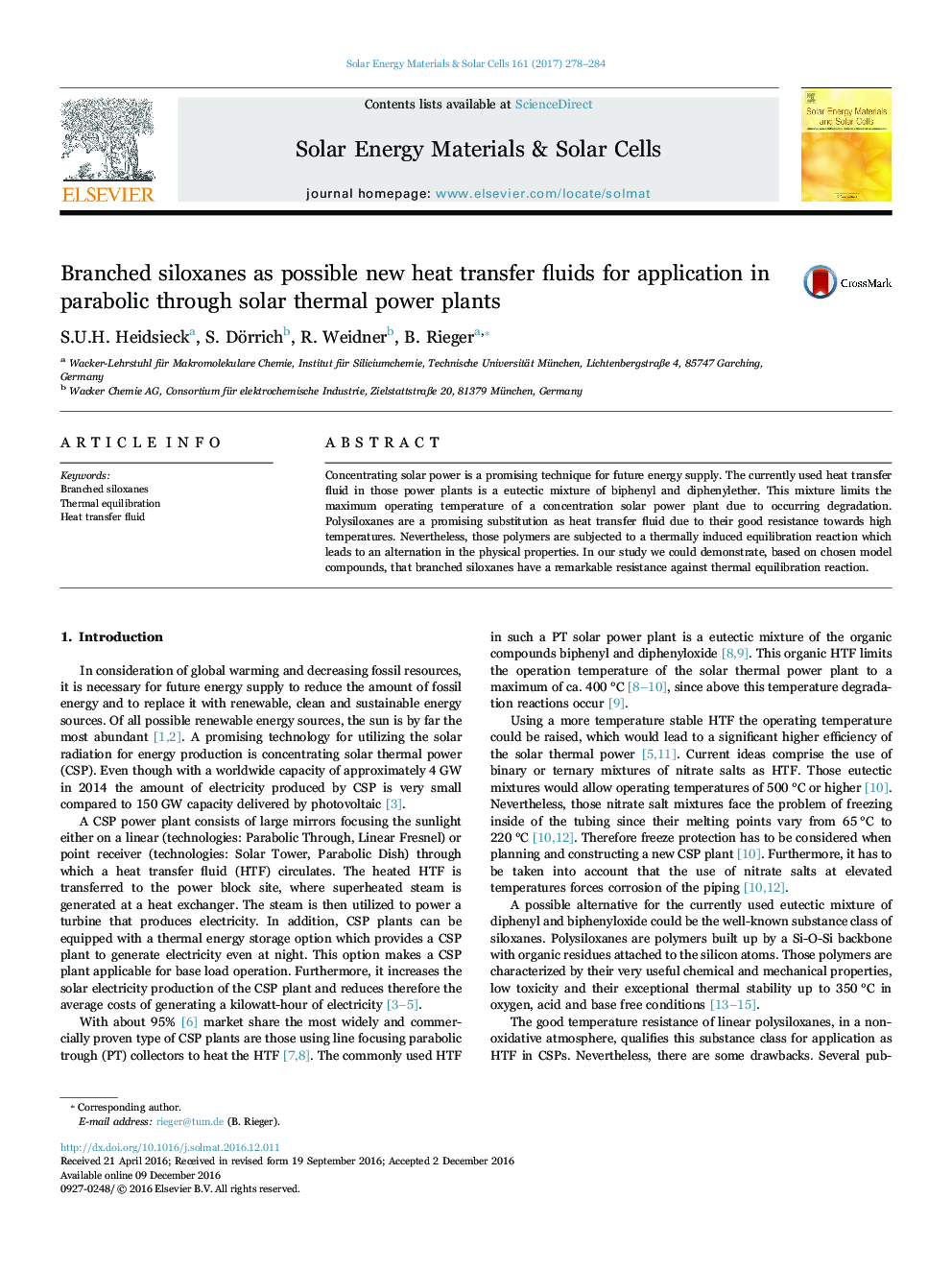| Article ID | Journal | Published Year | Pages | File Type |
|---|---|---|---|---|
| 6457032 | Solar Energy Materials and Solar Cells | 2017 | 7 Pages |
â¢Branching reduces thermal induced equilibration reaction within siloxanes.â¢Q-units reduce thermal equilibration stronger than T-units.â¢Branched siloxane QM4 is a promising new HTF for solar thermal power plants.
Concentrating solar power is a promising technique for future energy supply. The currently used heat transfer fluid in those power plants is a eutectic mixture of biphenyl and diphenylether. This mixture limits the maximum operating temperature of a concentration solar power plant due to occurring degradation. Polysiloxanes are a promising substitution as heat transfer fluid due to their good resistance towards high temperatures. Nevertheless, those polymers are subjected to a thermally induced equilibration reaction which leads to an alternation in the physical properties. In our study we could demonstrate, based on chosen model compounds, that branched siloxanes have a remarkable resistance against thermal equilibration reaction.
